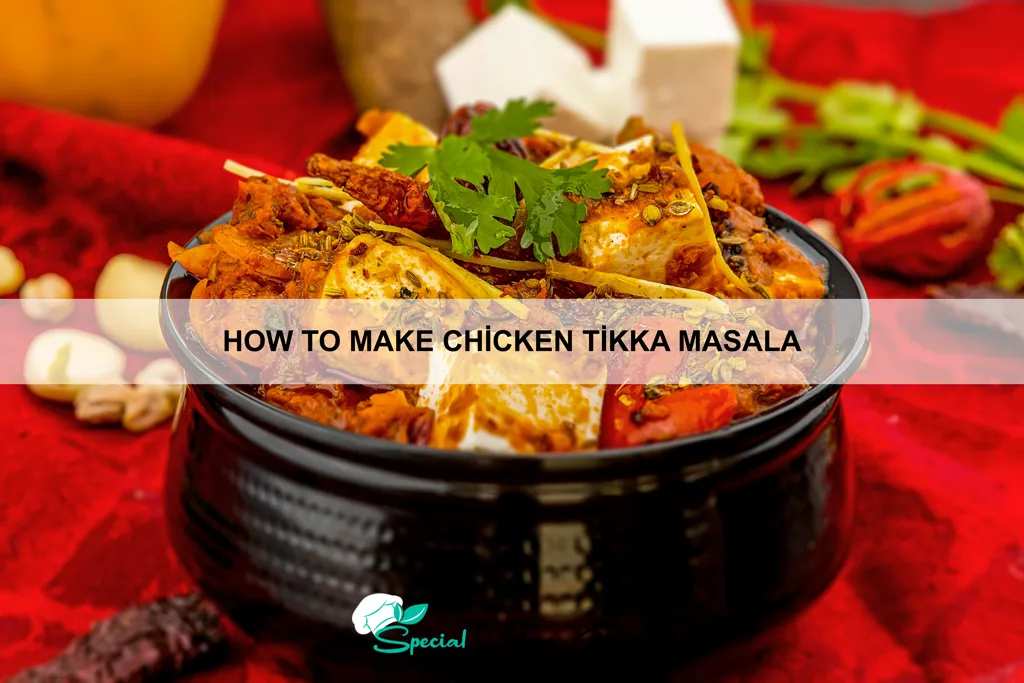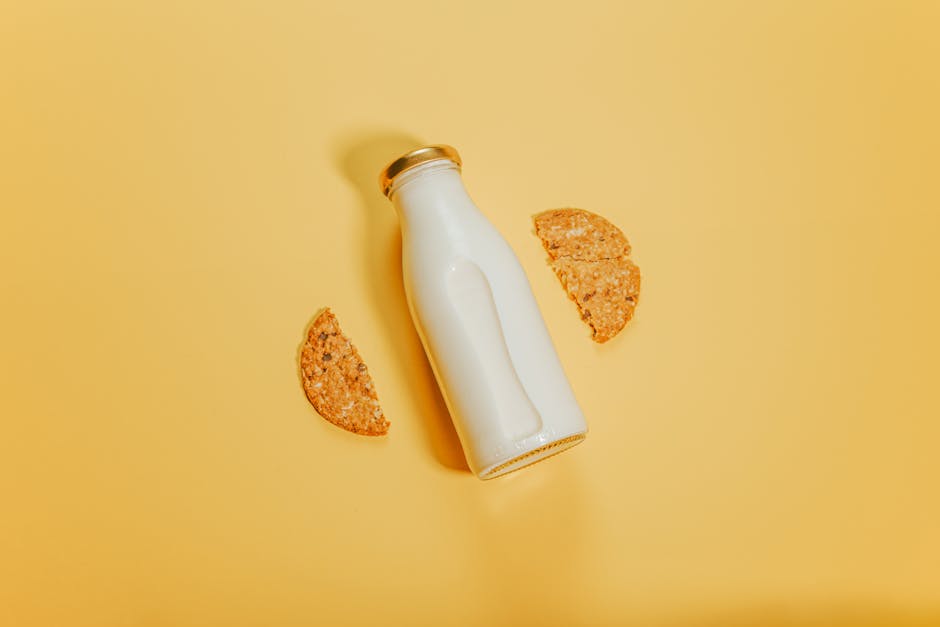Chicken Tikka Masala, a dish so beloved it’s practically a national treasure in the UK, boasts a surprisingly complex and debated history. While its exact origins remain shrouded in some mystery, the most popular story points to its creation in the 1970s in Scotland or England. The narrative often credits a Bangladeshi chef, perhaps adapting a traditional tandoori chicken recipe to cater to British palates. This involved adding a creamy tomato-based sauce, a departure from the drier, spicier nature of authentic tandoori preparations. The result? A culinary fusion that quickly transcended its humble beginnings.
The dish’s phenomenal popularity is undeniable. In the UK alone, it’s estimated that millions of portions are sold annually, making it a culinary icon and arguably the nation’s unofficial favourite curry. This widespread acceptance highlights its adaptability – Chicken Tikka Masala transcends regional and cultural boundaries, appealing to a vast range of tastes and preferences. Its creamy texture, balanced blend of spices, and satisfyingly rich flavour profile have cemented its position as a crowd-pleaser, consistently ranking high in popularity polls and restaurant menus across the globe.
Beyond its commercial success, Chicken Tikka Masala represents a fascinating example of culinary evolution and cultural exchange. It’s a testament to the power of adaptation and innovation in the culinary arts, highlighting how dishes can transform and evolve as they travel across cultures and continents. The dish’s journey from a possible adaptation of a Bangladeshi dish to a British favourite showcases the dynamic interplay between immigration, culinary traditions, and the creation of entirely new dishes that reflect the multicultural tapestry of modern society. This fusion is not only delicious but also a reflection of our increasingly interconnected world.
Understanding the history and cultural significance of Chicken Tikka Masala adds an extra layer of appreciation to the experience of both making and eating it. The next section will guide you through a step-by-step process for creating your own delicious version of this iconic dish, ensuring you can experience the satisfying blend of flavours and textures for yourself. Let’s embark on this culinary adventure together!
Ingredients and Measurements
This recipe yields approximately 6 servings of delicious Chicken Tikka Masala. Accurate measurements are crucial for achieving the perfect balance of flavors. Use a kitchen scale for the most precise results, especially for spices.
For the Chicken Marinade:
- 1.5 lbs boneless, skinless chicken breasts, cut into 1-inch cubes (Approximately 680g)
- 1 cup plain yogurt (240ml) – Use full-fat yogurt for richer flavor and better marinade absorption. Greek yogurt works well too.
- 2 tbsp lemon juice (30ml) – Freshly squeezed is best.
- 2 tbsp ginger-garlic paste (30g) – You can easily make your own by blending fresh ginger and garlic.
- 1 tbsp garam masala (15g) – A blend of ground spices; adjust to your spice preference.
- 1 tbsp paprika (15g) – Adds a beautiful color and subtle smokiness.
- 1 tsp turmeric powder (5g) – For color and a slightly earthy flavor.
- 1 tsp cumin powder (5g) – Warm and earthy spice.
- 1 tsp coriander powder (5g) – Adds a citrusy note.
- 1/2 tsp cayenne pepper (optional) (2.5g) – Adjust to your desired level of heat.
- 1 tsp salt (5g) – Or to taste.
For the Sauce:
- 2 tbsp vegetable oil (30ml) – Use a high-heat oil like canola or vegetable.
- 1 large onion, finely chopped (approximately 150g)
- 2 cloves garlic, minced
- 1 inch ginger, grated
- 1 (14.5 oz) can diced tomatoes, undrained (411g)
- 1 cup heavy cream (240ml) – For a richer, creamier sauce.
- 1/2 cup water (120ml) – Adjust as needed for desired consistency.
- 1 tbsp garam masala (15g)
- 1 tsp paprika (5g)
- 1/2 tsp cumin powder (2.5g)
- 1/2 tsp coriander powder (2.5g)
- 1/2 tsp salt (2.5g) – Or to taste.
- 1/4 tsp cayenne pepper (optional) (1.25g) – Adjust to your desired level of heat.
- Fresh cilantro, chopped (for garnish)
Important Note: Adjust the amount of spices according to your preference for heat and flavor intensity. Start with the lower quantities suggested and add more gradually to avoid overwhelming the dish. Taste as you go and season accordingly.
Marinating the Chicken
Marinating the chicken is crucial for achieving the tender, flavorful chicken that is the hallmark of a great Chicken Tikka Masala. A good marinade not only tenderizes the meat but also infuses it with the aromatic spices that define this dish. For this recipe, we’ll be using approximately 1.5 lbs (680g) of boneless, skinless chicken thighs, cut into 1-inch cubes. This size ensures even cooking and optimal marinade absorption.
In a large bowl, combine the following ingredients for the marinade: 1 cup plain yogurt (full-fat is recommended for richness), 2 tablespoons lemon juice (freshly squeezed is best!), 2 tablespoons ginger-garlic paste (you can easily make your own by blending equal parts fresh ginger and garlic), 1 tablespoon paprika, 1 tablespoon garam masala, 1 teaspoon turmeric powder, 1 teaspoon cumin powder, 1 teaspoon coriander powder, 1/2 teaspoon cayenne pepper (adjust to your spice preference), 1/2 teaspoon salt, and 1/4 teaspoon black pepper.
Thoroughly mix all the marinade ingredients until they form a smooth, homogenous paste. This ensures even distribution of flavors throughout the chicken. Then, add the cubed chicken to the bowl and gently toss until all the pieces are completely coated with the marinade.
Cover the bowl with plastic wrap and refrigerate for at least 4 hours, or preferably overnight. The longer the chicken marinates, the more tender and flavorful it will become. The yogurt acts as a natural tenderizer, breaking down the chicken’s proteins, while the spices infuse their delicious aromas into the meat. Avoid using metal bowls for marinating as this can react with the acidic ingredients and affect the flavor.
Before cooking, remove the chicken from the refrigerator about 30 minutes prior to grilling or baking. This allows the chicken to come to room temperature, ensuring more even cooking. If you’re using a grill, ensure the chicken is cooked through to an internal temperature of 165°F (74°C). If baking, adjust cooking time based on your oven and the size of your chicken pieces. You can also use a thermometer to check for doneness.
Pro Tip: For an extra layer of flavor, consider adding a tablespoon of freshly chopped cilantro and a pinch of saffron threads to your marinade. These additions will elevate the overall aromatic profile of your Chicken Tikka Masala.
Preparing the Sauce
The sauce is the heart and soul of Chicken Tikka Masala, so take your time and build layers of flavor. We’ll be making a rich and creamy sauce from scratch, avoiding any shortcuts for maximum deliciousness. Begin by gathering your ingredients: 1 large onion, finely chopped; 2 cloves garlic, minced; 1 inch ginger, grated; 1 (14.5 ounce) can diced tomatoes, undrained; 1 (13.5 ounce) can full-fat coconut milk; 1 cup heavy cream; 2 tablespoons tomato paste; 1 tablespoon garam masala; 1 tablespoon paprika; 1 teaspoon turmeric; 1 teaspoon cumin; ½ teaspoon cayenne pepper (or more, to taste); ½ teaspoon salt; ¼ teaspoon black pepper.
Heat 2 tablespoons of vegetable oil in a large, heavy-bottomed pan or Dutch oven over medium heat. Avoid using a non-stick pan as the spices can react with the coating. Add the chopped onions and sauté until softened and lightly golden, about 5-7 minutes. This step is crucial for developing a good base flavor. Don’t rush this process; low and slow is key.
Add the minced garlic and grated ginger to the pan and sauté for another minute until fragrant. Be careful not to burn the garlic and ginger, as this will impart a bitter taste. Stir constantly to prevent sticking.
Now, it’s time to add the spices! Stir in the tomato paste, garam masala, paprika, turmeric, cumin, cayenne pepper, salt, and black pepper. Cook for about 30 seconds, stirring continuously, to toast the spices and release their aromas. This step significantly enhances the flavor profile of the sauce. You’ll notice the spices deepen in color.
Pour in the can of diced tomatoes (undrained) and bring the mixture to a simmer. Reduce the heat to low, cover, and let it simmer gently for 15-20 minutes, stirring occasionally. This allows the flavors to meld and deepen. The longer it simmers, the richer the sauce becomes.
Finally, stir in the coconut milk and heavy cream. Using full-fat coconut milk and heavy cream is essential for achieving the signature creamy texture. Bring the sauce to a gentle simmer, then reduce the heat to the lowest setting and let it simmer for another 5-10 minutes, allowing the sauce to thicken slightly. Taste and adjust seasoning as needed, adding more salt, cayenne pepper, or any other spice to your preference.
Once the sauce has reached your desired consistency and flavor, remove it from the heat. Your delicious, homemade Chicken Tikka Masala sauce is ready to be combined with your perfectly cooked chicken!
Cooking the Chicken
Before you begin cooking the chicken, ensure it’s properly prepared. We’ll be making Chicken Tikka, the foundation of our Chicken Tikka Masala. Start with 1.5 lbs of boneless, skinless chicken breasts, cut into 1-inch cubes. This size ensures even cooking and tender pieces in the final dish.
In a large bowl, combine the chicken with the marinade. For this recipe, we’ll use a classic yogurt-based marinade. Whisk together 1 cup plain Greek yogurt (full-fat recommended for richness), 2 tablespoons lemon juice, 1 tablespoon ginger-garlic paste (freshly made is best!), 1 teaspoon ground cumin, 1 teaspoon ground coriander, 1/2 teaspoon turmeric powder, 1/2 teaspoon paprika, 1/4 teaspoon cayenne pepper (adjust to your spice preference), and 1 teaspoon salt. Thoroughly mix the marinade and chicken, ensuring each piece is coated evenly. Cover the bowl and refrigerate for at least 4 hours, or preferably overnight. The longer it marinates, the more flavorful the chicken will be.
Once marinated, you have several options for cooking the chicken. For the most authentic flavor, we recommend grilling or broiling. Preheat your grill or broiler to medium-high heat. If grilling, thread the marinated chicken onto skewers. If broiling, arrange the chicken pieces in a single layer on a baking sheet. Cook for 8-10 minutes per side, or until the chicken is cooked through and slightly charred. Use a meat thermometer to ensure the internal temperature reaches 165°F (74°C).
Alternatively, you can bake the chicken. Preheat your oven to 400°F (200°C). Spread the marinated chicken in a single layer on a baking sheet. Bake for 20-25 minutes, flipping halfway through, until cooked through. Baking produces slightly less char than grilling or broiling, but still yields delicious results.
Important Note: Regardless of your cooking method, avoid overcrowding the chicken. This ensures even cooking and prevents steaming, which can result in soggy chicken. Once cooked, remove the chicken from the heat and set aside. Allow it to cool slightly before adding it to the sauce. Do not overcook the chicken, as it will become dry and tough.
Now that your chicken is perfectly cooked, you’re ready to move on to the next step: making the creamy, flavorful Tikka Masala sauce!
Simmering the Sauce
With the chicken cooked and set aside, it’s time to create the heart of the dish: the rich and creamy Tikka Masala sauce. This stage requires patience and attention to detail to achieve the perfect balance of flavors and texture.
Begin by heating 2 tablespoons of vegetable oil in a large, heavy-bottomed pan or pot over medium heat. Once the oil is shimmering, add 1 large onion, finely chopped. Cook, stirring occasionally, until the onion is softened and translucent, about 5-7 minutes. Don’t rush this process; properly caramelized onions contribute significantly to the depth of flavor.
Next, add 2 cloves of garlic and 1 inch of ginger, both minced. Sauté for another minute until fragrant. Be careful not to burn the garlic and ginger, as this can impart a bitter taste. Professional Tip: Using a fine grater instead of mincing will release more flavor from the ginger and garlic.
Now, it’s time to introduce the spices. Add 1 tablespoon of garam masala, 1 teaspoon of ground cumin, 1 teaspoon of ground coriander, 1/2 teaspoon of turmeric powder, and 1/4 teaspoon of cayenne pepper (or more, to taste). Stir constantly for 30 seconds, allowing the spices to toast slightly and release their aromas. This step is crucial for developing the complex flavor profile of the sauce.
Pour in 1 (28-ounce) can of crushed tomatoes and 1 cup of heavy cream. Stir well to combine all the ingredients. Bring the sauce to a gentle simmer, then reduce the heat to low. Cover the pan and let it simmer for at least 15-20 minutes, stirring occasionally. The longer it simmers, the richer and more flavorful the sauce will become. This allows the flavors to meld and deepen.
After simmering, taste the sauce and adjust the seasoning as needed. You might want to add more cayenne pepper for extra heat, salt to taste, or a squeeze of lemon juice for brightness. Finally, gently stir in the cooked chicken tikka pieces, ensuring they are evenly coated in the sauce. Simmer for another 5 minutes to heat through and allow the chicken to absorb the flavors of the sauce.
Serve hot, garnished with fresh cilantro and a dollop of plain yogurt (optional). Enjoy your homemade Chicken Tikka Masala!
Garnishing and Plating Your Chicken Tikka Masala
The final presentation of your Chicken Tikka Masala is crucial to elevating it from a delicious meal to a culinary masterpiece. Careful garnishing and plating not only enhance the visual appeal but also add textural and aromatic complexity.
Begin by choosing a suitable serving dish. A wide, shallow bowl allows for a generous spread of the sauce and highlights the vibrant color. For a more formal presentation, individual serving bowls are excellent. Avoid using overly ornate dishes that might distract from the dish itself.
Next, consider the garnishes. Fresh cilantro is a classic choice, offering a bright, herbaceous contrast to the rich sauce. Finely chop approximately 2 tablespoons of cilantro and sprinkle it generously over the Chicken Tikka Masala. Avoid using too much, as it can overwhelm the other flavors.
For added texture and visual interest, consider adding a sprinkle of 1 tablespoon of finely chopped red onion. The red onion provides a pleasant sharpness that cuts through the richness of the sauce. A few slivers of fresh ginger, about 1 teaspoon, finely julienned, can also be incorporated for a subtle spicy kick and elegant look.
A squeeze of fresh lime juice, approximately ½ a lime, just before serving, adds a touch of acidity that balances the creamy sauce. This is best done at the table, allowing the diner to customize the level of tartness. Do not add the lime juice too early, as it can make the sauce watery.
Finally, consider plating techniques. Arrange the Chicken Tikka Masala neatly in the bowl, ensuring an even distribution of chicken pieces and sauce. The garnishes should be artfully scattered, not haphazardly thrown on. Aim for a visually appealing arrangement that showcases the ingredients and colors.
For an extra touch of elegance, consider serving the Chicken Tikka Masala with a side of plain basmati rice, naan bread, or even a simple cucumber raita. These accompaniments provide textural contrast and complete the dining experience. Remember, the presentation should complement the flavors of the dish, not compete with them.
With a little attention to detail, your Chicken Tikka Masala will be as visually stunning as it is delicious, leaving a lasting impression on your guests.
Recommendations
For the best Chicken Tikka Masala experience, marinate the chicken for at least 4 hours, or preferably overnight, to allow the flavors to fully penetrate. This will result in incredibly tender and flavorful chicken.
When cooking the chicken, ensure it’s cooked through to an internal temperature of 165°F (74°C) to guarantee food safety. Don’t overcrowd the pan when browning the chicken, as this will reduce browning and steaming instead of searing. Work in batches if necessary.
The sauce is key! Adjust the amount of spices to your preference. If you prefer a milder curry, reduce the amount of chili powder or use less of the hotter chilies. Conversely, for a spicier dish, add more chili powder or a chopped chili pepper. Taste and adjust the seasoning throughout the cooking process.
To enhance the creaminess of the sauce, you can use full-fat coconut milk instead of regular cream for a richer, more flavorful result. Alternatively, a blend of both works wonderfully.
Serving Suggestions: Chicken Tikka Masala is traditionally served with basmati rice and naan bread. The rice absorbs the delicious sauce beautifully, while the naan is perfect for scooping up every last bit. Consider adding a side of raita (yogurt dip) to cool down the spice.
Storage: Leftovers can be stored in an airtight container in the refrigerator for up to 3 days. Reheat gently on the stovetop or in the microwave, adding a splash of water or cream if it becomes too thick.
Complementary Dishes: A simple salad with cucumber and mint is a refreshing accompaniment. Saag paneer (spinach and cheese curry) is another delicious Indian dish that pairs well with Chicken Tikka Masala, offering a contrasting flavor profile. Papadums (thin crispy lentil wafers) make a great starter.
Nutritional Information (approximate per serving, varies depending on ingredients and portion size): Calories: 450-600; Protein: 30-40g; Fat: 25-35g; Carbohydrates: 30-40g. Note: This is an estimate and may vary based on specific ingredients used and portion size. For precise nutritional information, use a nutrition calculator with your specific recipe details.





